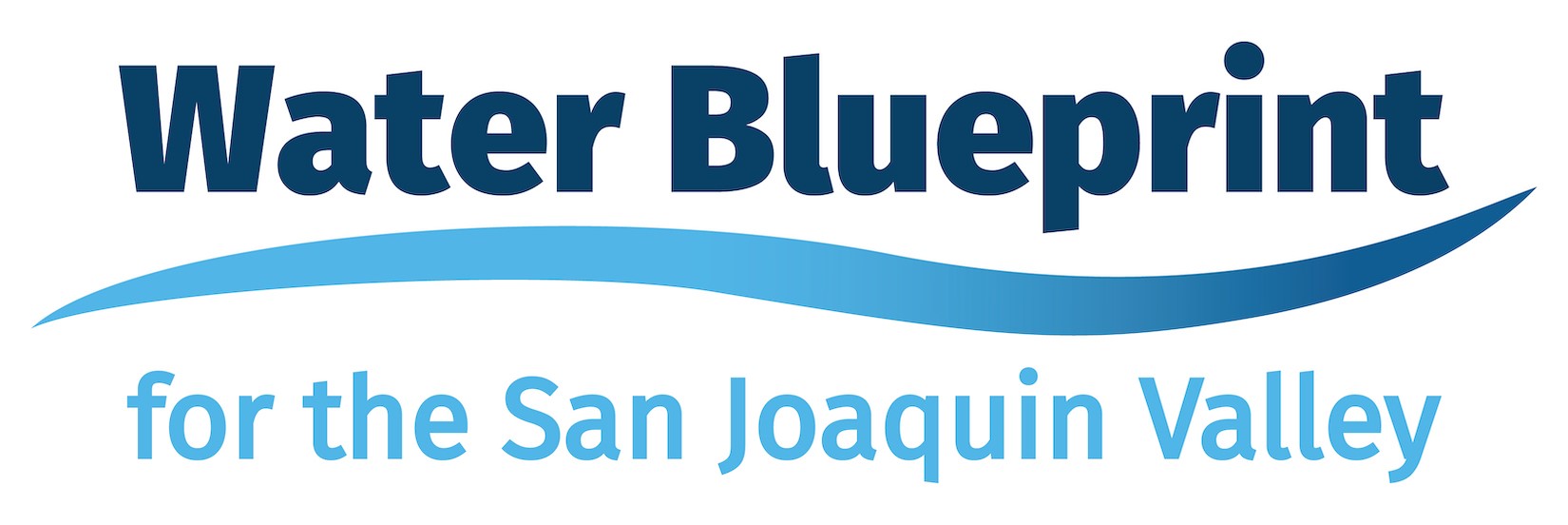The Water Blueprint for the San Joaquin Valley has come a long ways since its formation. Last month it took its place amongst 17 other water organizations from across the state by cosigning a letter to Governor Gavin Newsom and legislative leaders requesting the massive state budget surplus be responsibly spent on water related needs.
The July 12, 2022 letter outlined $1.35 billion in 2022-2023 funding priorities with: $750 million for water recycling projects, $500 million for Proposition One adjustments and $100 million for dam safety and reservoir operations. The other signing organizations were a diverse group of heavy hitters including: the Bay Area Council, Metropolitan Water District, Santa Clara Valley Water District, the Orange County Business Council and the Southern California Water Coalition. It’s a mark of progress for the Blueprint to be recognized as a viable partner.
diverse group of heavy hitters including: the Bay Area Council, Metropolitan Water District, Santa Clara Valley Water District, the Orange County Business Council and the Southern California Water Coalition. It’s a mark of progress for the Blueprint to be recognized as a viable partner.
Southern California Water Coalition
The SCWC is like the Blueprint only more mature as an organization. It was formed in 1984 and is a nonprofit, nonpartisan, partnership of more than 175 members located in eight Southern California counties. Diverse interest groups from business, regional and local government, agriculture, labor, environmental, water agencies and the general public are all involved. Members representing the agricultural sector has some names familiar to the Valley: Jason Gianquinto of Semitropic Water Storage District, former California Secretary of Agriculture A.G. Kawamura and Geoff Vanden Heuvel of the Milk Producers Council.
On July 22, 2022 the SJVW Blueprint’s Voluntary Executive Director Austin Ewell and Chair of the Blueprint’s Technical Committee Scott Hamilton spoke at the Southern California Water Coalition’s board meeting held at the Long Beach Yacht Club.
While the SCWC had some knowledge of the Blueprint the presentation gave more detail and information. SCWC President Charlie Wilson thanked SCWC board member and Blueprint board member Vanden Heuvel for helping bring the two organizations together.
Ewell told the two dozen or so attendees the Blueprint is a coalition of the willing coming together with the goal of growing the San Joaquin Valley’s water future – therefore the future of everyone living in the Valley whose communities and livelihoods depend on the production of food and those who eat – which is everyone, a much less exclusive group.
Ewell explained the Blueprint is made up of community leaders, businesses, water agencies, environmental and social groups, and agricultural interests working together to find solutions to water shortage problems taking place in the present and to plan for the future. The Blueprint is a nonprofit with a board and works collaboratively with state and federal water agencies and contractors, environmental organizations and wildlife refuges and others including Self Help Enterprises serving the unmet water needs of rural and disadvantaged communities and the California Department of Water Resources.
San Joaquin Valley Water Blueprint
Decreased surface deliveries over time have taken their toll on the Valley’s ability to recharge its aquifer. New laws known as the Sustainable Groundwater Management Act, SGMA will limit the amount of groundwater that can be pumped. Research by the Public Policy Institute of California and others shows one million acres of land will be forced to idle production. Almost a fifth of the land now being farmed in the Valley unless another source of water can be realized.
The revelation of such a large amount of economic loss prompted a study by UC Berkeley economists Dr. David Sunding and David Roland-Holst https://waterblueprintca.com/facts/ show more than 42,000 direct ag jobs and more than $1.1 billion in income lost. An additional loss of 65,000 ag related jobs in the Valley and 85,000 statewide will result. The state’s economy will take a $2.1 billion hit and the sad part is the most vulnerable, disadvantaged communities will take the brunt. It’s not just jobs. $782 million in taxes will be lost. Taxes that pay for local social services, school and health care. Services needed more than ever in an economic downturn will have even less funding.
Ewell said the Blueprint’s goals are to develop a plan to address environmental, community and agricultural needs in the Valley. To keep the Valley economy strong by facilitating sustainable groundwater basins and minimizing the adverse impacts of SGMA. (There was a time when the Blueprint was mischaracterized as an attempt to circumnavigate SGMA. It isn’t and never was.)
The Blueprint is sustainable because there is a hydrological cycle in California that yields surplus water in wet years. This water can be captured and stored underground. The increased groundwater storage protects against droughts and provides supplies for communities. It doesn’t stress the Delta ecosystem and is both feasible and economical. The Blueprint will develop new water sources, build new and restore existing conveyance, and it will create recharge while benefiting wetland and riparian habitats in the Valley. But it will require commitment and investment.
Hamilton presented the SCWC some of the nuts and bolts of the Blueprint. According to the Public Policy Institute the Valley needs an additional 1.5 to two million acre feet per year. There are two events that would make increased water supplies to the San Joaquin Valley from Delta exports feasible. Almost always there is a time in the spring when snowmelt send a large amount of water into the Delta. And two to three times within a decade there are very wet years. The PPIC estimates an average 10 million acre feet, a quantity well above and beyond the amount needed for downstream water supply and environmental use, flow past the two pumping plants in the Delta – the federal Bill Jones Plant and the state Harvey Banks Plant each year. If a fraction of this surplus water could be captured when available and put to good use the Valley’s ag based economy and population that depends on it wouldn’t have to suffer a draconian slowdown.
The problem has been this huge gulp of water comes during the winter and spring when extra water isn’t needed for irrigation. Therefore it must be stored for later use. Eight years after its passage only a small portion of funding from Prop One has found its way to any surface storage project and none have been completed. Increased storage has to be found elsewhere.
SGMA has spurred the momentum to start underground recharge and storage on a large scale. As anyone in California knows it’s been very dry the past few years. But if a relatively small portion of the water during the high spring outflow could be diverted and moved to the Valley for recharge the aquifer could be replenished. The potential for this is huge but there are two impediments.
There needs to be conveyance. The existing north/south conveyance is in need of repairs and refurbishment and additional east/west channels will be needed to fully utilize the system and move temporary surface water supplies.
Another problem that needs to be overcome is the antiquated fish screens being used in the Delta. In an effort to protect endangered species such as the Delta smelt large facilities have been built at the intake junctures where river water is moved to the pumps. The goal is to prevent the aquatic wildlife from being captured by the flows and ran through the pumps. The old style fish screens are louvered with the current as to cause the fish to be forced downstream past the intake and in all honesty they are better than a poke in the eye with a sharp stick. But the old style screens don’t provide enough protection to allow the pumps to run whenever the species maybe near the intake area.
Fish Friendly
Hamilton and the Blueprint technical committee have a design for a new fish screen that is completely safe for all the aquatic flora and fauna in the Delta. It is technology that is currently in use on four rivers in California and performing without harm to fish. It is also economically feasible – passive, with very little maintenance required and actually increases habitat.
These “Fish Friendly Diversions” are a series of perforated pipe buried under the streambed. The natural buoyancy of the fish, the current and slow percolation rate prevents any harm. An infiltration bed with the special pipe buried beneath it would be flooded and the filtered water collected into special channels – fish free and then pumped to the pumping plants and into the Delta Mendota Canal and California Aqueduct.
A pilot program is needed and a location in the Delta has been identified. The cost is $5 million or so. Senator Shannon Grove of Bakersfield has sent a letter to Senator Nancy Skinner, Chair of the Senate Budget Committee and Assemblyman Phil Ting, Chair of the Assembly Budget Committee requesting a total of $7.5 million (or less than 8/1,000th of the $90 billion state budget surplus) for the Fish Friendly Diversion pilot project and a little extra to help fund the Blueprint for two years. The Blueprint is also funded by member donations.
The Southern Californians were a receptive audience and understood they would also benefit from improved fish screens adding flexibility to Delta diversions. SCWC board member and Mayor of Fontana, Acquanetta Warren appreciated the opportunity to learn more about the Blueprint.
“It’s innovative and different,” said Warren. “Under the current conditions every idea counts. We need to continue working together and exploring how we can help each other.” Well said.
Why A Blueprint?
Here is some background on how the need for the Water Blueprint came about. California’s population has almost tripled since the 1960s when there were 16 million people. Now the state has 40 million residents with 24 million in Southern California and another seven million in the Bay Area. The San Joaquin Valley’s water supply was originally intended as a conjunctive use program. Water in the form of snow would melt and be retained in reservoirs and then allowed to flow to farms for flood irrigation.
The benefits included flood control, the production of hydroelectricity and flood irrigation that would enhance recharge to the aquifer where the stored water could be pumped during dry spells. California has always had significant droughts and heat waves. The storage system was designed to get the state through four to five years of drought. California also has very wet years with great amounts of rain and snowmelt flowing through the Delta on its way to the Pacific Ocean.
Crops in the Valley and how they are irrigated has changed over the years. Row crops are planted annually and can be rotated. Cotton, tomatoes, garlic, melons and a host of other crops were the staple of most farms. Alfalfa was prevalent. The environmental community demanded and in most cases received their wish to limit diversions of surface water to the Valley’s farmland. This created an incentive to plant higher value permanent crops such as those grown in orchards. Also incentivized was a change from flood irrigation to micro-irrigation. The trees use the same amount of water either way but micro-irrigation doesn’t provide the recharge of flood irrigation.
This lack of surface water deliveries is causing the Valley’s aquifer to be consumed quicker than it can be replaced. The conversion of permanent crops greatly reduced the flexibility farmers had in the past. Having an orchard or vineyard requires water to keep the investment alive. Previously farmers had the option to plant less acres in annual crops and fallow land if the water supply was low. You can’t do that with trees and keep them alive.
SGMA
In 2014 a trio of bills were passed in Sacramento that make up the Sustainable Water Management Act. Before only surface water was controlled by the government. With SGMA groundwater is now under government restrictions. Under SGMA overdrafted areas divided into subbasins have 20 years starting in 2020 to bring their groundwater use in compliance to avoid six undesirable outcomes that include subsidence and the loss of recharge capacity. If the people of the San Joaquin Valley do nothing to mitigate SGMA more than one million acres of the most productive farmland in the world will have to be permanently retired from production. The Blueprint was created to find ways to prevent the devastating economic and social harm that would result while still ensuring sustainable groundwater.
DISCLAIMER OF RESPONSIBILITY; Waterwrights.net strives to provide its clients with the most complete, up-to-date, and accurate information available. Nevertheless, Waterwrights.net does not serve as a guarantor of the accuracy or completeness of the information provided, and specifically disclaims any and all responsibility for information that is not accurate, up-to-date, or complete. Waterwrights.net’s clients therefore rely on the accuracy, completeness and timeliness of information from Waterwrights.net entirely at their own risk. The opinions expressed in this report are those of the author and do not represent any advertisers or third parties.
ALL RIGHTS RESERVED. Copyright 2022 by www.WaterWrights.net/DAW
SAN Joaquin Valley Water BLUEPRINT is an inclusive and collaborative effort by all San Joaquin Valley residents regardless of interests to come together with one voice to prevent a water based economic meltdown while preserving and improving our communities and habitat. https://waterblueprintca.com/
































